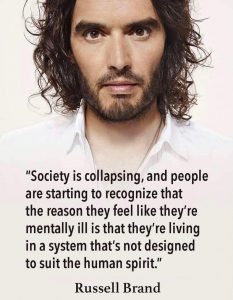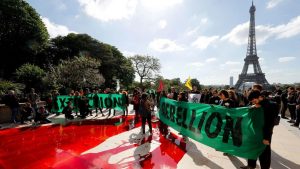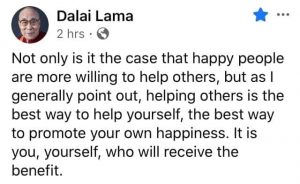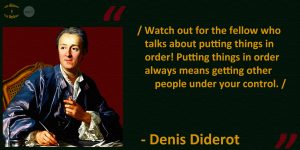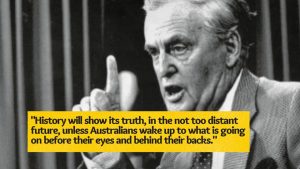
“I CAN ONLY ATTEMPT TO WARN MY FELLOW AUSTRALIANS THAT THE VERY FUTURE OF AUSTRALIA IS AT STAKE”
On 9 September 1987, Premier Joh Bjelke Petersen, gave a speech to the Queensland Parliament, in which he accused Bob Hawke and his Government, of pursuing a subversive and authoritarian agenda bent on stripping Australians of all their democratic rights and freedoms.
The main target of Joh’s attack was the planned National Identity System – the ‘Australia Card’ – which he said would impose ‘Big Brother’ controls over all Australian citizens.
When I came across the speech recently, I immediately noticed the parallels between what Joh was warning against in 1987, and what is happening today with Health Passports and Morrison’s plan for a new Digital Identity system.
For those who may be interested, I have quoted excerpts below:
……
“I RISE ON A MATTER OF GRAVE AND FAR-REACHING CONSEQUENCE TO THE COUNTRY THAT WE ALL LOVE AND HONOUR.
I refer, of course, to the threat by the insidious and unAustralian Hawke Labor Government to impose upon every man, woman and child in this country a form of institutionalisation that is unknown in the free world.
The matter at issue, is the arrogant determination of the ALP people in Canberra to introduce what they like to call the Australia Card—a name they hope will play on patriotism.
I WAS THE ONLY ONE WHO OPPOSED THE SYSTEM AT THE FIRST SUMMIT ATTENDED BY MR HAWKE AND OTHERS.
On that occasion I told them quite clearly that I was completely against the system because of what it meant and what it represented.
In real terms, the proposal could mark the end of the Australian democratic heritage for which men and women in generations past have given their lives to protect and preserve.
In effect, everyone would become just a number.
The Government can call it what it likes—the Australia Card or a national identification system—but by any name it is a plastic tattoo upon every Australian to mark every one of us for the control of our lives, in the grand socialistic ideal to which that luminary of the Fabian society, R. J. L. Hawke, is completely committed.
The arrogance of the Prime Minister, who postures as a man of consensus, invariably against a backdrop of the national flag, seeks to destroy Australia by progressively shifting this land of freedom towards a rigid and totally regulated, socialist republic.
If you do not have this card with you at all times, you will not be able to deposit or withdraw money at your bank; you will not be able to claim your Medicare benefits; you will not be able to get a job; you will not be able to buy or sell any property; you will not be able to sell primary products, even to a marketing authority; AND YOU WILL NOT BE ADMITTED TO A HOSPITAL.
It is absolutely staggering and unbelievable that today the people of Australia face this system that a Fabian-oriented Prime Minister and Federal Government are seeking to impose upon them.
We all know there are many isolated and limited banks of information on each one of us.
But today, there is no system of cross-referencing the information, so that there is no way that a full dossier of private details can be built up.
The Australia Card—the plastic tattoo—will provide a system to consolidate the information and build up personal dossiers with every scrap of private information on every person in this land.
What the Hawke Government seeks to introduce is a system of privacy invasion that is unknown in the English-speaking world.
It is a frightening piece of legislation.
My government will oppose the Australia Card with every means at their disposal.”
https://documents.parliament.qld.gov.au/events/han/1987/1987_09_09.PDF

